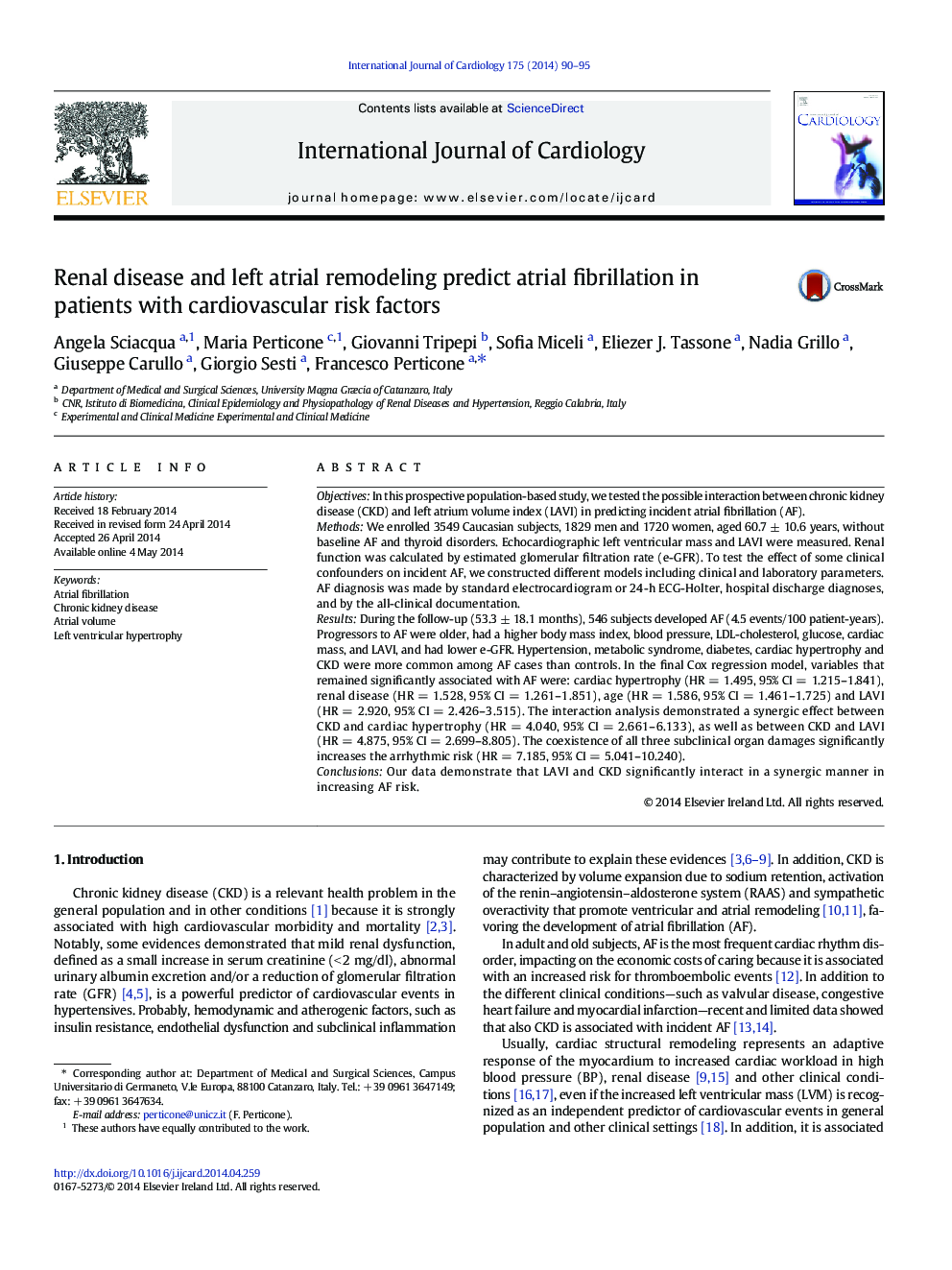| کد مقاله | کد نشریه | سال انتشار | مقاله انگلیسی | نسخه تمام متن |
|---|---|---|---|---|
| 5971233 | 1576183 | 2014 | 6 صفحه PDF | دانلود رایگان |
- Left atrial enlargement shows a relevant role in the pathogenesis of AF because its structural modifications reflect a chronic exposure to hemodynamic overload.
- Of clinical relevance, the association of increased left atrial volume and renal disease interact in multiplicative manner in predicting AF in patients with cardiovascular risk factors.
- Simultaneous interventions are necessary to intensively treat all subclinical organ damages to obtain beneficial effects in reducing the risk of AF appearance.
- Drugs modulating the renin-angiotensin-aldosterone system might have a protective role in the appearance and progression of subclinical organ damage.
- On the basis of the present data it is possible to suggest that AF may be considered a time-integrated marker of exposure to multiple cardiovascular risk factors.
ObjectivesIn this prospective population-based study, we tested the possible interaction between chronic kidney disease (CKD) and left atrium volume index (LAVI) in predicting incident atrial fibrillation (AF).MethodsWe enrolled 3549 Caucasian subjects, 1829 men and 1720 women, aged 60.7 ± 10.6 years, without baseline AF and thyroid disorders. Echocardiographic left ventricular mass and LAVI were measured. Renal function was calculated by estimated glomerular filtration rate (e-GFR). To test the effect of some clinical confounders on incident AF, we constructed different models including clinical and laboratory parameters. AF diagnosis was made by standard electrocardiogram or 24-h ECG-Holter, hospital discharge diagnoses, and by the all-clinical documentation.ResultsDuring the follow-up (53.3 ± 18.1 months), 546 subjects developed AF (4.5 events/100 patient-years). Progressors to AF were older, had a higher body mass index, blood pressure, LDL-cholesterol, glucose, cardiac mass, and LAVI, and had lower e-GFR. Hypertension, metabolic syndrome, diabetes, cardiac hypertrophy and CKD were more common among AF cases than controls. In the final Cox regression model, variables that remained significantly associated with AF were: cardiac hypertrophy (HR = 1.495, 95% CI = 1.215-1.841), renal disease (HR = 1.528, 95% CI = 1.261-1.851), age (HR = 1.586, 95% CI = 1.461-1.725) and LAVI (HR = 2.920, 95% CI = 2.426-3.515). The interaction analysis demonstrated a synergic effect between CKD and cardiac hypertrophy (HR = 4.040, 95% CI = 2.661-6.133), as well as between CKD and LAVI (HR = 4.875, 95% CI = 2.699-8.805). The coexistence of all three subclinical organ damages significantly increases the arrhythmic risk (HR = 7.185, 95% CI = 5.041-10.240).ConclusionsOur data demonstrate that LAVI and CKD significantly interact in a synergic manner in increasing AF risk.
Journal: International Journal of Cardiology - Volume 175, Issue 1, 15 July 2014, Pages 90-95
